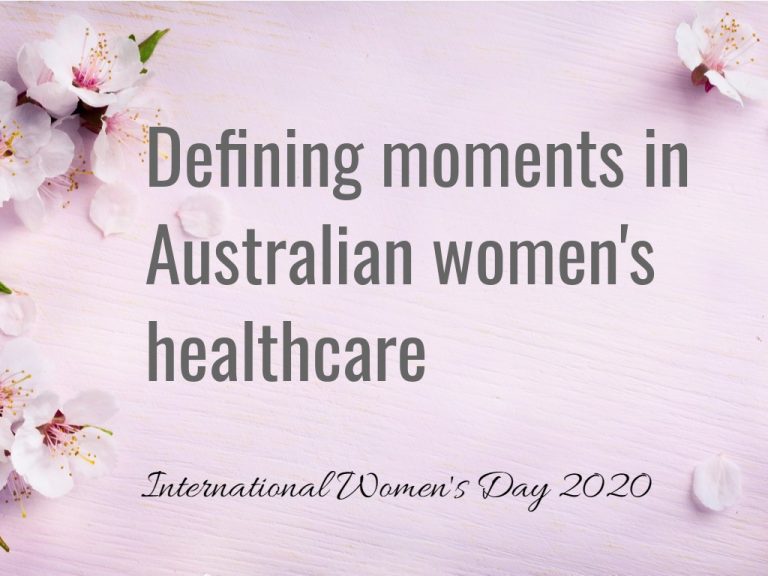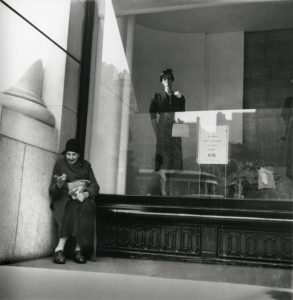Defining moments in Australian women’s healthcare
International Women’s Day 2020

A brief history of Australian women and the health care system
Nearly a hundred years have passed since the first Australian women marched for their rights to celebrate International Women’s Day. Each year on the 8th of March, women across the world gather to recognise those that have contributed to gender equality and women’s rights, and to pay tribute to the women and men who continue to be instrumental in its advancement.
Did you know that it was only 60 years ago when Australian women were granted the right to prevent pregnancy through the contraceptive pill? And that the pill was only afforded to women who were married and had a prescription? Or that the pill came with a hefty luxury tax of 27.5%?
This year, Health Deal celebrates International Women’s Day by commemorating the advancement of health care for the Australian woman. Today, Australia’s health system is considered one of the best in the world and women have access to just about any and all medical services in the public and private sector. We have come a long way in 150 years. Here’s how far:
1912
In 1912, the first Australian maternity allowance was introduced. All women who had given birth, regardless of their marital status, could claim £5- the equivalent of 2 weeks’ worth of wages for unskilled workers. The claim, however, was not open to indigenous women, Pacific Islanders and Asian women. Prime Minister Andrew Fisher introduced the payment for a number of reasons- to ease the financial strain of a new baby for the family, and to decrease the high infant mortality rate; 5 pounds meant a woman could pay for a midwife or doctor, significantly increasing the child’s survival rate
1943
Millions of Australians were left unemployed or faced reduced work hours and wages during the Great Depression. This prompted the Curtin government to create a national welfare system in 1943. The Unemployment and Sickness Benefits Act was passed and carried through in 1945. Under this act, men aged between 16 and 65 and women aged between 16 and 60 who were residents of Australia for a year or longer were eligible to receive benefits.
Both men and women aged 21 and over could collect 22 shillings a week. Singles aged 18 and 20 received 20 shillings and singles aged 18 and lower received 15 shillings.
1961
1961 gave women the right to prevent pregnancy through contraception pill. The contraceptive was afforded to women who were married and had a prescription; however, the pill carried with it a heavy 27.5% tax.
1964
The Nursing Mothers’ Association was founded by Mary Paton and 5 of her friends in 1964 to create support for and offer quality information to breastfeeding mothers. Ten years later, the first breastfeeding helpline was established, taking calls at all hours to help struggling mothers. In 2001, members of the Association voted to be called the Australian Breastfeeding Association, a name they could not previously adopt as the Postmaster General would not allow the word breastfeeding to be printed in the telephone directory.
1969
A Supreme Court Ruling established that a woman could have an abortion if it was medically necessary and proportionate, based on the honest belief that the pregnancy poses as serious danger to a woman’s mental and physical health.
1971
Aboriginal women had access to Aboriginal community-controlled health services- the first of its kind, which was established in Redfern, Sydney in 1971.
1972
1972 saw the abolishment of the luxury tax on the contraception pill, as well as the passing of The Federal Child Care Act that funded day care facilities for children of sick or working parents. The single mother’s benefit was also implemented in that same year and was later extended to include all single parents.
1973
Women in the public service were granted the right to take 40 weeks of unpaid leave and 12 weeks paid leave following the maternity leave (commonwealth employees) act.
1973
The government begins injecting significant funding into equal opportunity employment policies, women’s health centres, child care centres, education, training, and housing.
1979
Women who were employed on a long term basis (1 year or longer) were granted the right to 52 weeks of unpaid maternity leave. The leave, however, was unpaid.
1979
Women who were employed on a long term basis (1 year or longer) were granted the right to 52 weeks of unpaid maternity leave. The leave, however, was unpaid.
1983
Dr Helen Millroy becomes Australia’s first Indigenous doctor.
1984
On the 1st of February, 1984, the Medicare system (then called Medibank) was introduced- affording all Australians the right to basic health care.
1991
The national screening program for breast cancer was established. Women over 40 are now able to access free mammography screenings through BreastScreen Australia. The organization aims to reduce illness and death from breast cancer through early detection.
1994
On the 3rd of March, 1994, the Australia Women’s Health Network was formed. It is the national body that advocates for policies and procedures that affect the health of Australian women
1998
The Breast Cancer Network Australia was formed following public meetings in all states and territories. Australian women who have been affected by breast cancer can now access the organization for proper information about treatment, care and support.
2018
After 18 years of campaigning, state and territory government finally repealed the tax on tampons and sanitary items. These items were previously categorised as ‘luxury items.’
2020
The National Health Women’s Health 2020-2030 strategy outlines the Ministry’s intention to strengthen the following policies:
- Maternal, sexual, and reproductive health
- Healthy ageing
- Chronic conditions and preventive health
- Mental health
- Health impacts of violence against women and girls
The fight for proper and equal health care rights for women in Australia has been a long and tumultuous journey. Even so, the last 150 years has seen incredible progress for women and girls, who coincidentally comprise more than half of the Australian population. This International Women’s Day, remember those who advocated for better health care and those that continue to do so. A healthier Australia means a happier Australia. Happy International Women’s Day










 Single
Single Couple
Couple Family
Family Single Parent
Single Parent